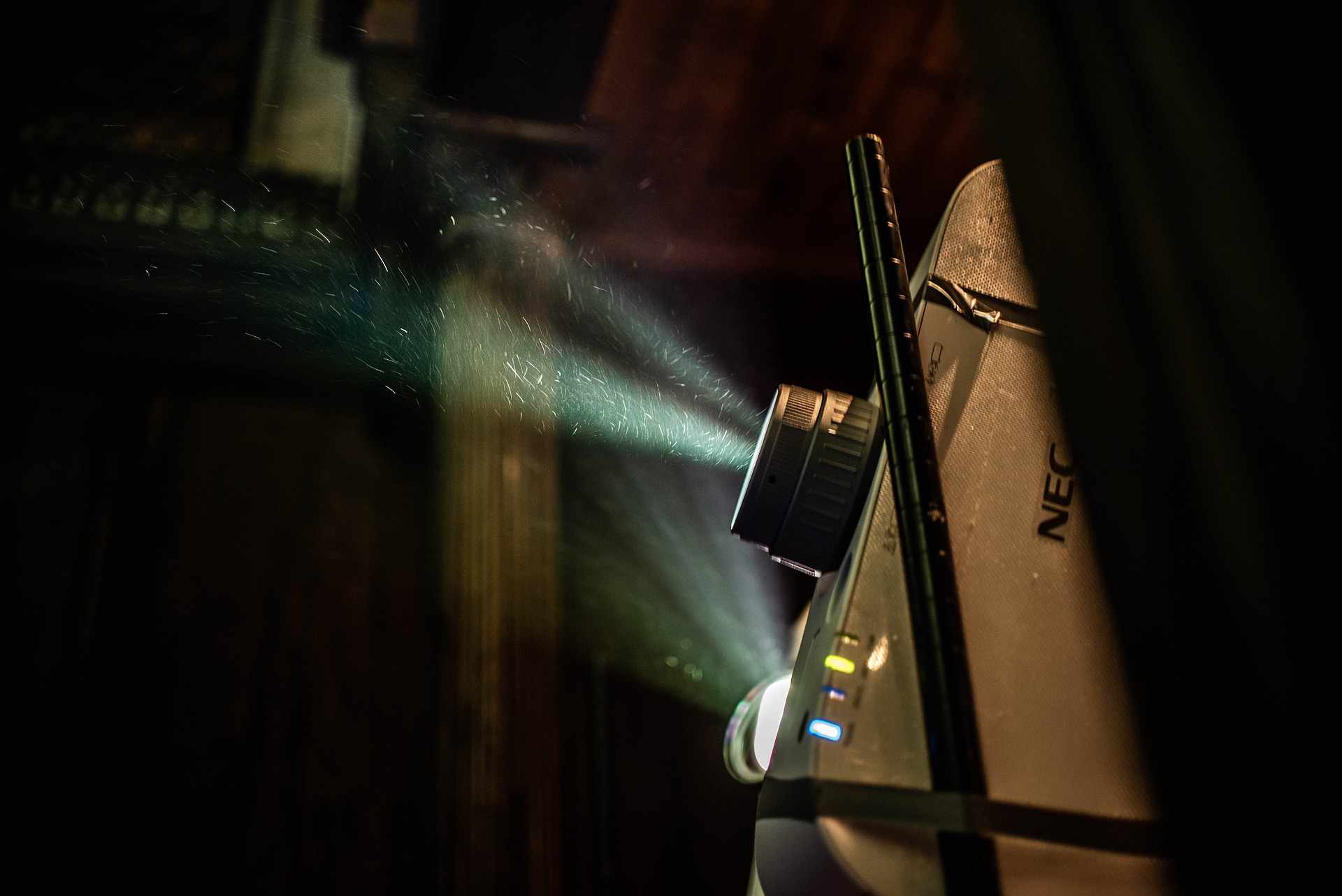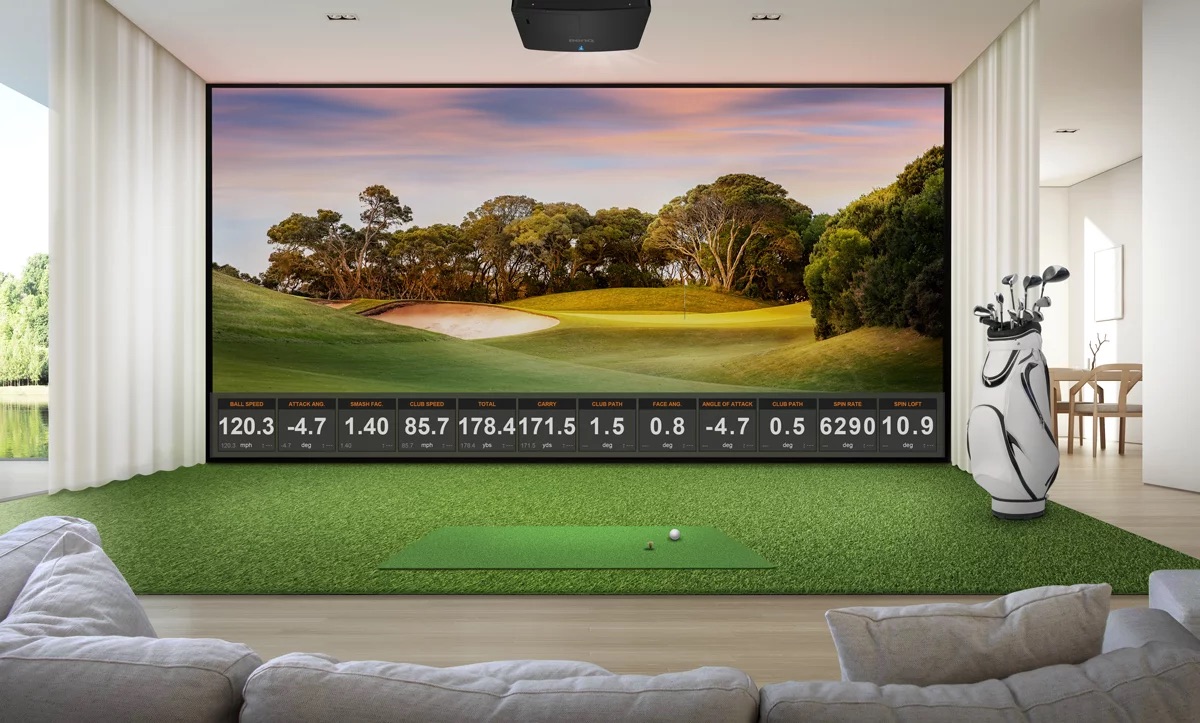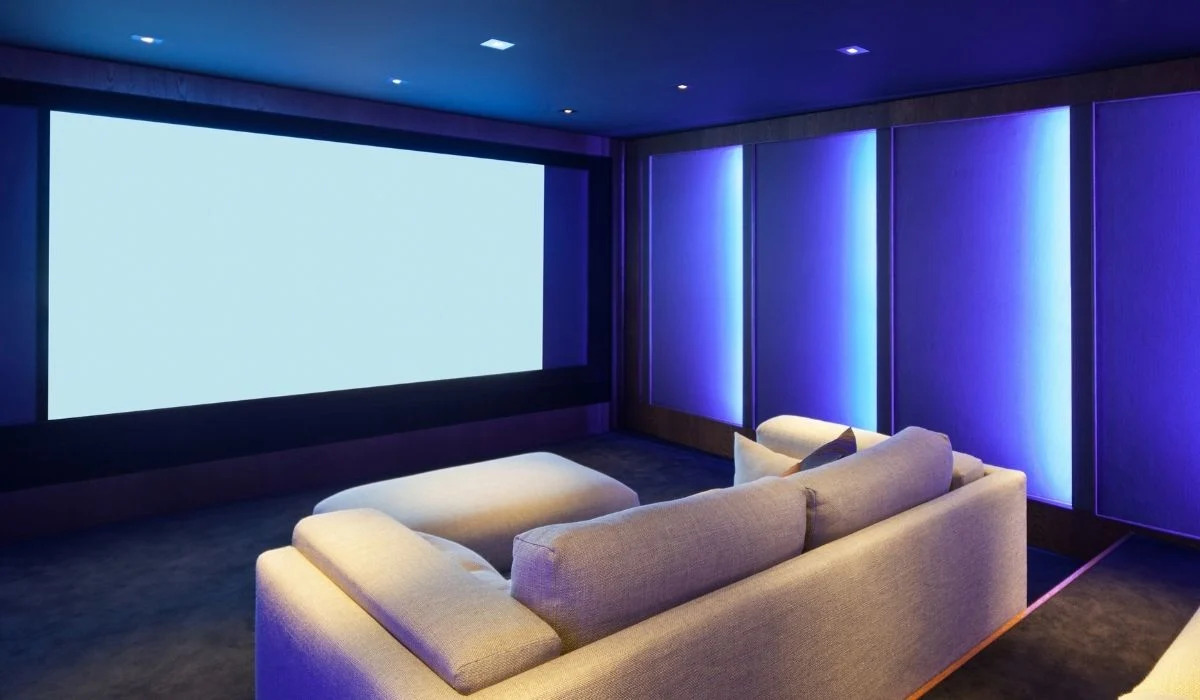Home>Technology>Home Entertainment Systems>What Kind Of Projector Do Movie Theaters Use


Home Entertainment Systems
What Kind Of Projector Do Movie Theaters Use
Modified: January 9, 2024
Discover the best home entertainment systems for an immersive cinematic experience. Find out what kind of projector movie theaters use and bring the big screen to your living room. Explore top-rated options now!
(Many of the links in this article redirect to a specific reviewed product. Your purchase of these products through affiliate links helps to generate commission for Storables.com, at no extra cost. Learn more)
Introduction
Welcome to the mesmerizing world of home entertainment systems! In today’s fast-paced world, where streaming services and on-demand content have become the norm, creating a captivating and immersive cinematic experience within the comfort of your own home has never been more appealing. One of the key components that contribute to this experience is the projector, which serves as the focal point of your home theater setup. Understanding the types of projectors used in movie theaters and their technological advancements can guide you in selecting the perfect projector for your home entertainment system.
Let’s delve into the realm of digital projectors, 3D projectors, and the crucial role of sound systems in recreating the magic of the silver screen within your personal space. By exploring these elements, you’ll gain valuable insights into the cutting-edge technologies that bring the magic of the movies to life in your home.
Key Takeaways:
- Digital projectors bring stunning visuals and vibrant colors to home theaters, creating a cinematic experience that rivals traditional movie theaters. Consider resolution, contrast ratio, and brightness when selecting a projector.
- 3D projectors offer an immersive viewing experience at home, transporting viewers into captivating and multidimensional worlds. Ensure compatibility with 3D content sources and consider refresh rate for smooth visuals.
Digital Projectors
Digital projectors have revolutionized the way movies are presented in theaters and have also become an integral part of home entertainment systems. These projectors utilize digital imaging technology to deliver stunning visuals with exceptional clarity and detail. The transition from traditional film projectors to digital projectors has significantly enhanced the overall viewing experience, offering sharper images, vibrant colors, and improved brightness levels.
One of the key advancements in digital projection technology is the use of Digital Light Processing (DLP) and Liquid Crystal Display (LCD) technologies. DLP projectors employ microscopic mirrors to reflect light, producing high-definition images with remarkable color accuracy. On the other hand, LCD projectors utilize liquid crystal panels to create images, delivering impressive picture quality and smooth motion performance.
Furthermore, the introduction of laser projectors has brought forth a new era of projection technology. Laser projectors utilize laser light sources to generate images, resulting in superior brightness, extended color gamut, and enhanced energy efficiency. These projectors offer long-lasting performance with minimal maintenance, making them an ideal choice for home theaters seeking uncompromising visual excellence.
When selecting a digital projector for your home entertainment system, it’s essential to consider factors such as resolution, contrast ratio, and brightness. High-resolution projectors, such as those with 4K and 8K capabilities, deliver incredibly detailed images, capturing every nuance of the content being displayed. Additionally, a high contrast ratio ensures deep blacks and vivid whites, contributing to a more immersive viewing experience.
With the advancements in digital projection technology, home theater enthusiasts can now enjoy a cinematic experience that rivals the visual splendor of traditional movie theaters. Whether you’re indulging in the latest blockbuster or immersing yourself in a classic film, a digital projector can elevate your home entertainment experience to new heights.
3D Projectors
Immersing oneself in the captivating world of 3D cinema has been a longstanding fascination for movie enthusiasts. The evolution of 3D projection technology has not only transformed the theatrical experience but has also found its place in home entertainment systems, offering a captivating and immersive viewing experience.
3D projectors utilize advanced techniques to create a sense of depth and realism, allowing viewers to experience content in a truly immersive manner. These projectors employ specialized 3D glasses to separate and direct distinct images to each eye, resulting in the perception of three-dimensional depth and enhanced visual engagement.
One of the key advancements in 3D projection technology is the utilization of polarized light or active shutter systems to deliver synchronized images to the viewer’s eyes. Polarized 3D projectors use polarizing filters to direct light waves in specific orientations, allowing each eye to perceive a slightly different perspective of the image. On the other hand, active shutter 3D projectors synchronize with active shutter glasses, rapidly alternating the display between the left and right-eye images, creating a seamless 3D effect.
When considering a 3D projector for your home entertainment system, it’s essential to ensure compatibility with 3D content sources, such as Blu-ray players or streaming devices. Additionally, the projector’s refresh rate and image processing capabilities play a crucial role in delivering smooth and flicker-free 3D visuals, enhancing the overall viewing experience.
3D projectors have the ability to transport viewers into a realm where on-screen action transcends the boundaries of the display, creating an enthralling and immersive cinematic experience. Whether you’re exploring the depths of an underwater world or witnessing the exhilarating action of a superhero film, a 3D projector can bring an added dimension of excitement to your home theater setup.
Movie theaters typically use digital projectors, specifically the Digital Cinema Initiatives (DCI) standard, which ensures high-quality image and sound. These projectors are designed for large screens and can handle the high demands of continuous use.
Sound System
While the visual component of a home entertainment system is undoubtedly crucial, the auditory experience plays an equally vital role in creating a truly immersive cinematic environment. A high-quality sound system is essential for enveloping viewers in rich, dynamic audio that complements the stunning visuals provided by the projector.
One of the key elements of an exceptional sound system is the use of a multi-channel audio setup, commonly known as a surround sound system. This configuration consists of multiple speakers strategically positioned around the viewing area to deliver an encompassing audio experience. The most prevalent surround sound formats include 5.1, 7.1, and Dolby Atmos, each offering varying degrees of immersion and spatial audio precision.
The 5.1 surround sound system comprises five speakers and a subwoofer, with three speakers placed at the front (left, center, right) and two at the rear, providing a balanced audio distribution. Moving up the hierarchy, the 7.1 system incorporates an additional pair of rear speakers, further enhancing the spatial audio effects. Dolby Atmos, on the other hand, introduces height channels, allowing sound to be projected from overhead, creating a truly three-dimensional audio experience.
Furthermore, the role of the audio receiver, also known as an AV receiver, is paramount in processing and amplifying audio signals from various sources, including Blu-ray players, gaming consoles, and streaming devices. The AV receiver serves as the central hub for audio and video connectivity, supporting advanced audio codecs and providing seamless integration with the projector and other audiovisual components.
In addition to speaker configuration and the AV receiver, the quality of the speakers themselves significantly impacts the overall sound reproduction. High-fidelity speakers, equipped with advanced driver technology and precise frequency response, can faithfully reproduce the nuances of soundtracks, dialogue, and ambient effects, elevating the immersive experience of home cinema.
By integrating a high-performance sound system into your home entertainment setup, you can transport yourself into the heart of the action, experiencing the full spectrum of sound as envisioned by filmmakers. From thunderous explosions to delicate whispers, a premium sound system ensures that every sonic detail is faithfully reproduced, enriching the cinematic journey within your personal viewing space.
Conclusion
As we’ve ventured into the realm of home entertainment systems, we’ve uncovered the pivotal role played by digital projectors, 3D projection technology, and high-quality sound systems in recreating the magic of the movie theater within the confines of your home. The evolution of digital projection technology has ushered in an era of unparalleled visual fidelity, offering stunning clarity, vibrant colors, and immersive viewing experiences that rival those found in traditional movie theaters.
Furthermore, the integration of 3D projection technology has elevated the level of engagement and immersion, allowing viewers to experience content in a captivating and multidimensional manner. Whether it’s the awe-inspiring visuals of a nature documentary or the exhilarating action sequences of a blockbuster film, 3D projectors have the power to transport audiences into a realm where on-screen experiences transcend the boundaries of the display, creating an enthralling cinematic adventure.
Complementing the visual spectacle, a high-quality sound system serves as the auditory backbone of the home theater experience, enveloping viewers in rich, dynamic audio that enhances the overall immersion. The strategic placement of speakers, coupled with advanced audio processing capabilities, ensures that every sonic detail is faithfully reproduced, from subtle ambient sounds to thunderous cinematic moments.
By carefully selecting and integrating these essential components into your home entertainment system, you can curate a cinematic experience that transcends the ordinary, allowing you to escape into captivating narratives, breathtaking visuals, and immersive soundscapes without leaving the comfort of your home.
So, whether you’re embarking on a thrilling adventure, exploring distant galaxies, or simply seeking to unwind with a timeless classic, the amalgamation of cutting-edge projection technology and immersive sound systems can transform your living space into a captivating cinematic sanctuary, where every viewing experience becomes an unforgettable journey.
Frequently Asked Questions about What Kind Of Projector Do Movie Theaters Use
Was this page helpful?
At Storables.com, we guarantee accurate and reliable information. Our content, validated by Expert Board Contributors, is crafted following stringent Editorial Policies. We're committed to providing you with well-researched, expert-backed insights for all your informational needs.
















0 thoughts on “What Kind Of Projector Do Movie Theaters Use”